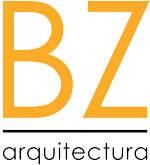Referring to the previous item (Architecture termite) and exploring more about the constructive patterns arising from the nature, we wanted to inquire about fractals and their role in architecture.
As we saw, termites based around the design construction to achieve a common goal (keep your food at a constant temperature), and achieved using patterns found in nature. But, How does nature optimize energy? The answer is: using fractal shapes.
Un fractal es una forma geométrica que reúne unas determinadas características que la hacen perfecta para su función. For example, we might consider a bubble like shape with the minimum area to accommodate a particular volume or branching trees as the optimal model to get the photosynthesis of all its leaves or pulmonary branches as an example to distribute air efficiently ... And all this natural fractals is achieved from models. It is a very effective way to grow because the body only has to repeat a rule to keep increasing in size.
A fractal not work individually but is the whole which acts as, we have no snow flakes, bronchi or lungs without… The problems in urbanism is that most cities have grown so suddenly that it does may have a fractal geometry but do not function as such, and that is because the "fractálica" unit has not been raised either.
Within a fractal system should be a hierarchy fact of the modern city lacks. A fractal hierarchy without city is the famous "The Generic City" Rem Koolhaas (known for his work as much as for his writings), a city that lacks identity as it expands and moves away from the center.
Maybe that's why, when projected at the urban level at any scale, must take into account the environment to form a continuous and connected set. Architecture and environment
Bibliography: Architecture fractal
-Chilean Journal of Anatomy v16. n º2, 1998.
-The Fractal Geometry of Nature, 1982. Benoit Mandelbrot
-Organization plant body. A. M. González.
-The generic city. Rem Koolhaas
-Bing Maps
-www.wikipedia.com
-www.static.betazeta.com



Muy interesante, pocas veces nos paramos a pensar en estos detalles tan complejos de la naturaleza.
De alguna manera solo la naturaleza sabe crear arquitectura. Y para acercarnos a imitarla pasará mucho tiempo.
Gracias por compartir la info
Muy buen artículo
Está bien el artículo